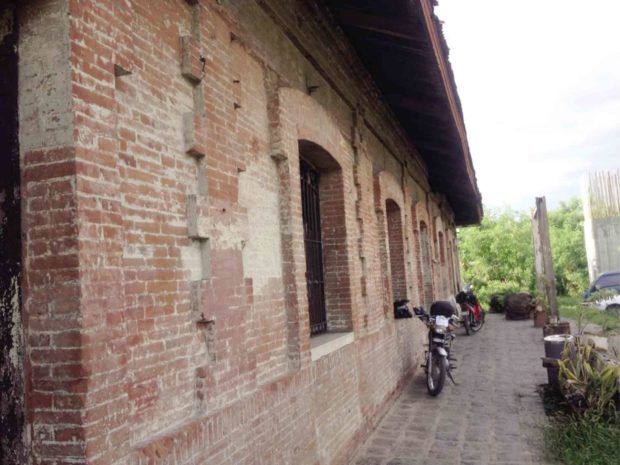New rail projects in, informal settlers out

Remnants of what used to be Tutuban Philippine National Railway station still stand in Bulacan’s City of Malolos. Relics of stations in the Bulacan towns of Guiguinto and Balagtas still look sturdy. —Carmel Reyes-Estrope
CLARK FREEPORT — Thousands of informal settlers would be moved out of communities that mushroomed around rail tracks that the Department of Transportation (DOTr) would revive for two new train projects connecting Manila to Clark and Manila to the Bicol region, according to officials.
The tracks belonged to the Philippine National Railways (PNR).
Timothy John Batan, assistant transportation secretary for railways, said the government would use right of way already owned by PNR.
The National Housing Authority (NHA) would have to remove 18,455 families from PNR tracks in Bulacan and Pampanga provinces. Shanties along or on railroad tracks had been called homes “along da riles” (homes along the tracks), after the popular 1990s television comedy series “Home Along Da Riles,” which starred the late comedian Dolphy.
Batan said the DOTr would work with the NHA, the Social Housing Finance Corp., the Housing and Urban Development Coordinating Council, local governments and other agencies to resettle these families.
41,000 families
Article continues after this advertisementCovered by the new projects were 41,000 families in the cities of Malabon, Caloocan and Valenzuela in Metro Manila; the towns of Meycauayan, Marilao, Bocaue, Balagtas and Guiguinto, and the City of Malolos in Bulacan; and the towns of Apalit, San Simon and San Luis, and the cities of San Fernando, Angeles and Mabalacat in Pampanga.
Article continues after this advertisementIt was not immediately known how many informal settlers had been transferred to relocation sites, how many had remained at the tracks and how many had moved back.
The Japanese and Chinese governments would finance the construction of the Manila-Clark and Manila-Bicol railways.
A Japanese loan would finance the Manila-Clark railway project, which became possible after the DOTr and Chinese-state-run firm Sinomach (China National Machinery Industry Corp.) resolved to drop legal and arbitration cases over the shelved Northrail project linking Caloocan City to the City of Malolos.
Controversies
Questions over the validity of the project delayed it by almost 10 years and arbitration proceedings dragged on for another five years.
PNR Phase 1, which runs from Tutuban in Divisoria, Manila, to Malolos, costs P105 billion. Phase 2 from Malolos to Clark requires a P211 billion outlay.
Batan said these two phases of the Manila-to-Clark railway had been approved by the board of the National Economic and Development Authority and would be bid out “but only among Japanese contractors.” —Tonette Orejas